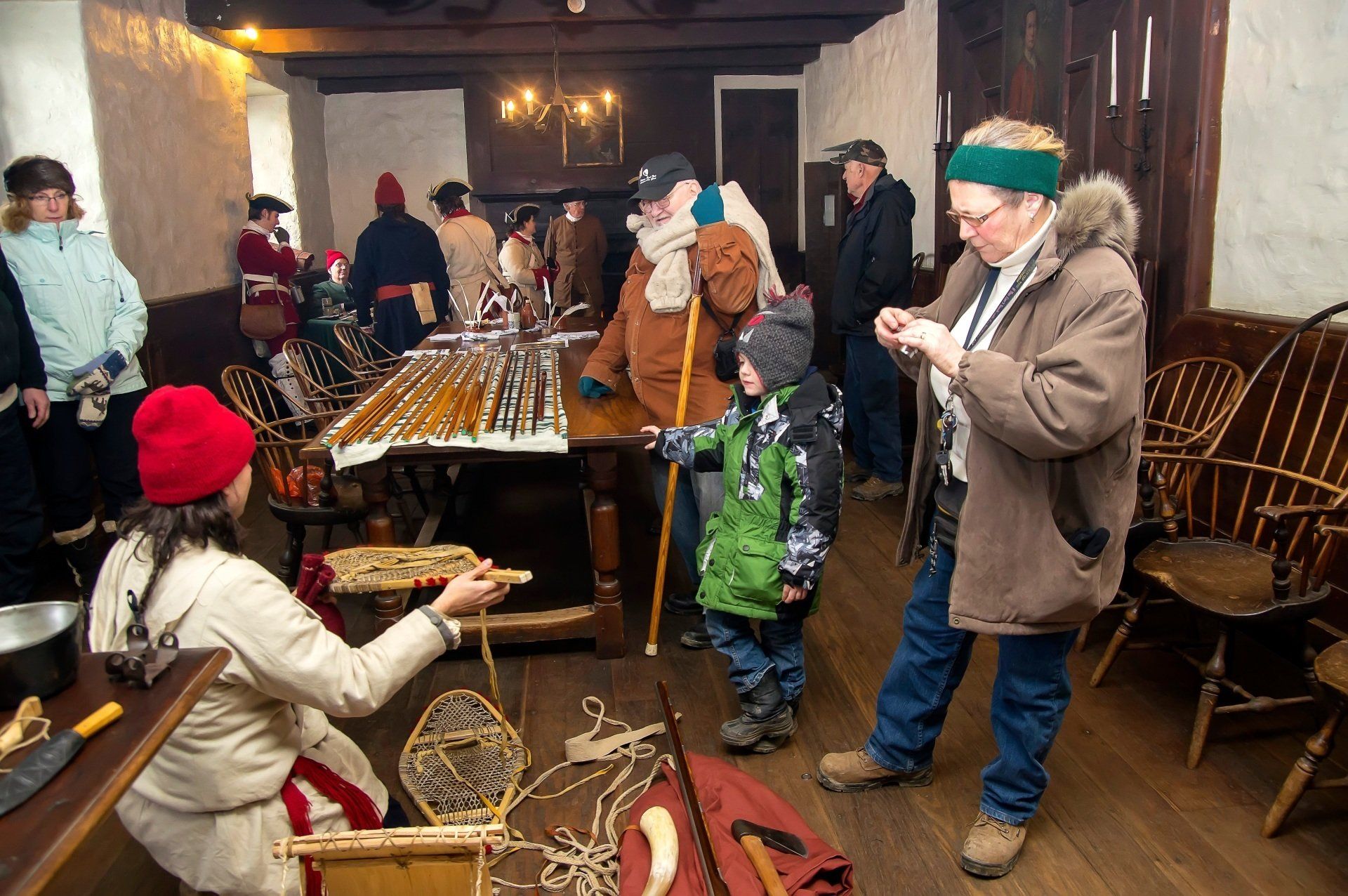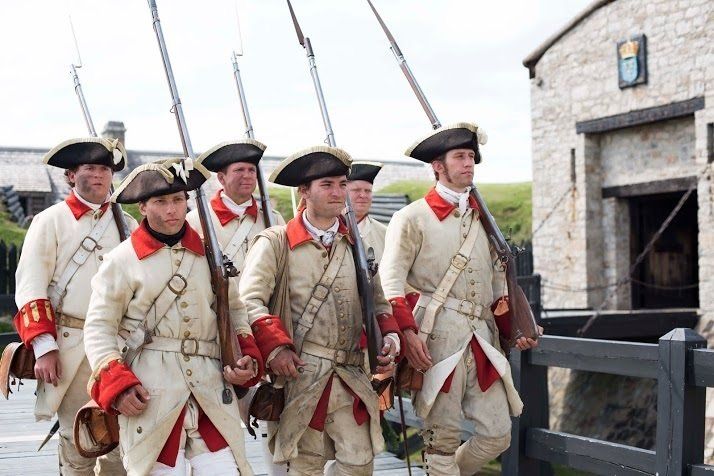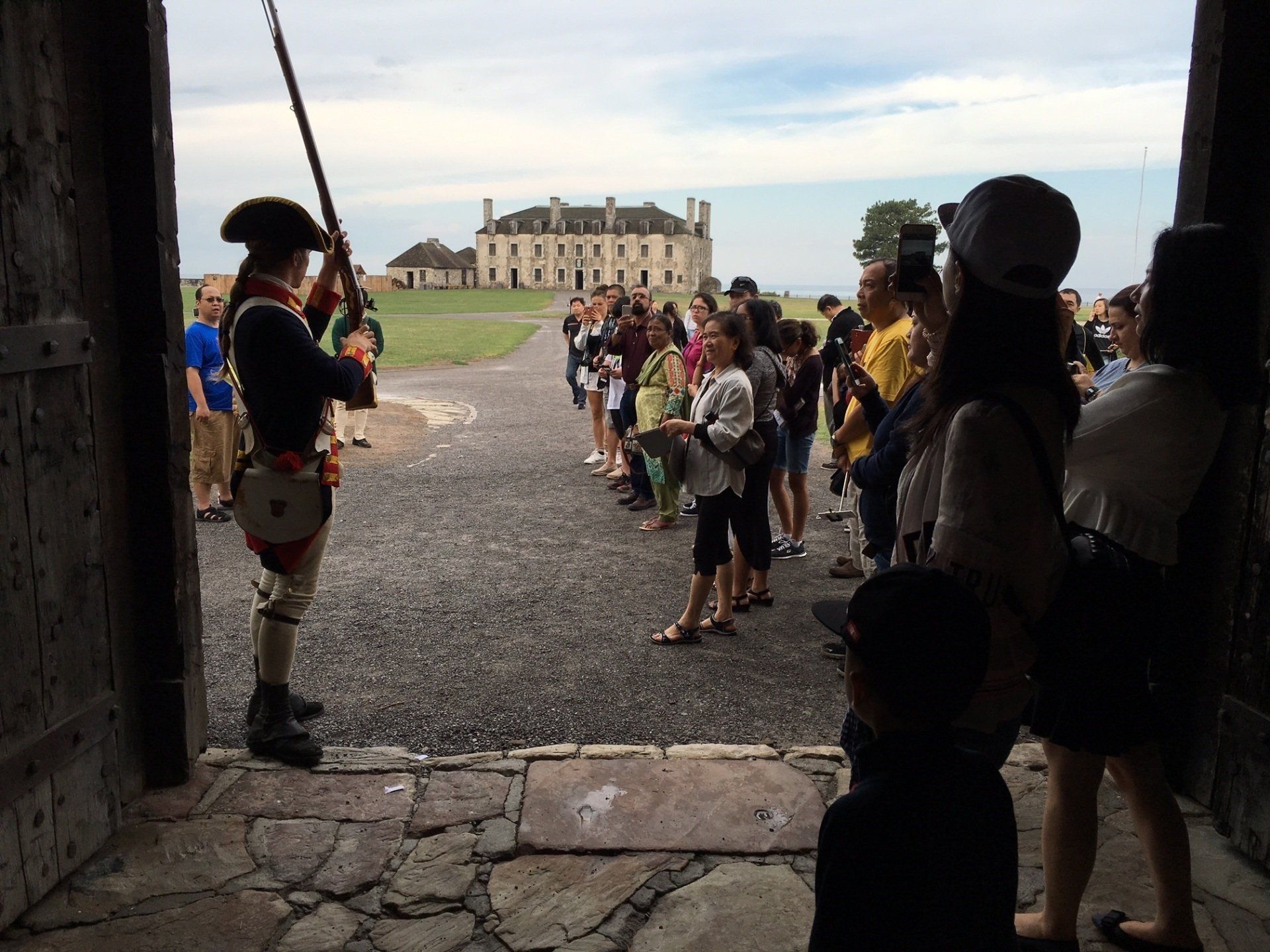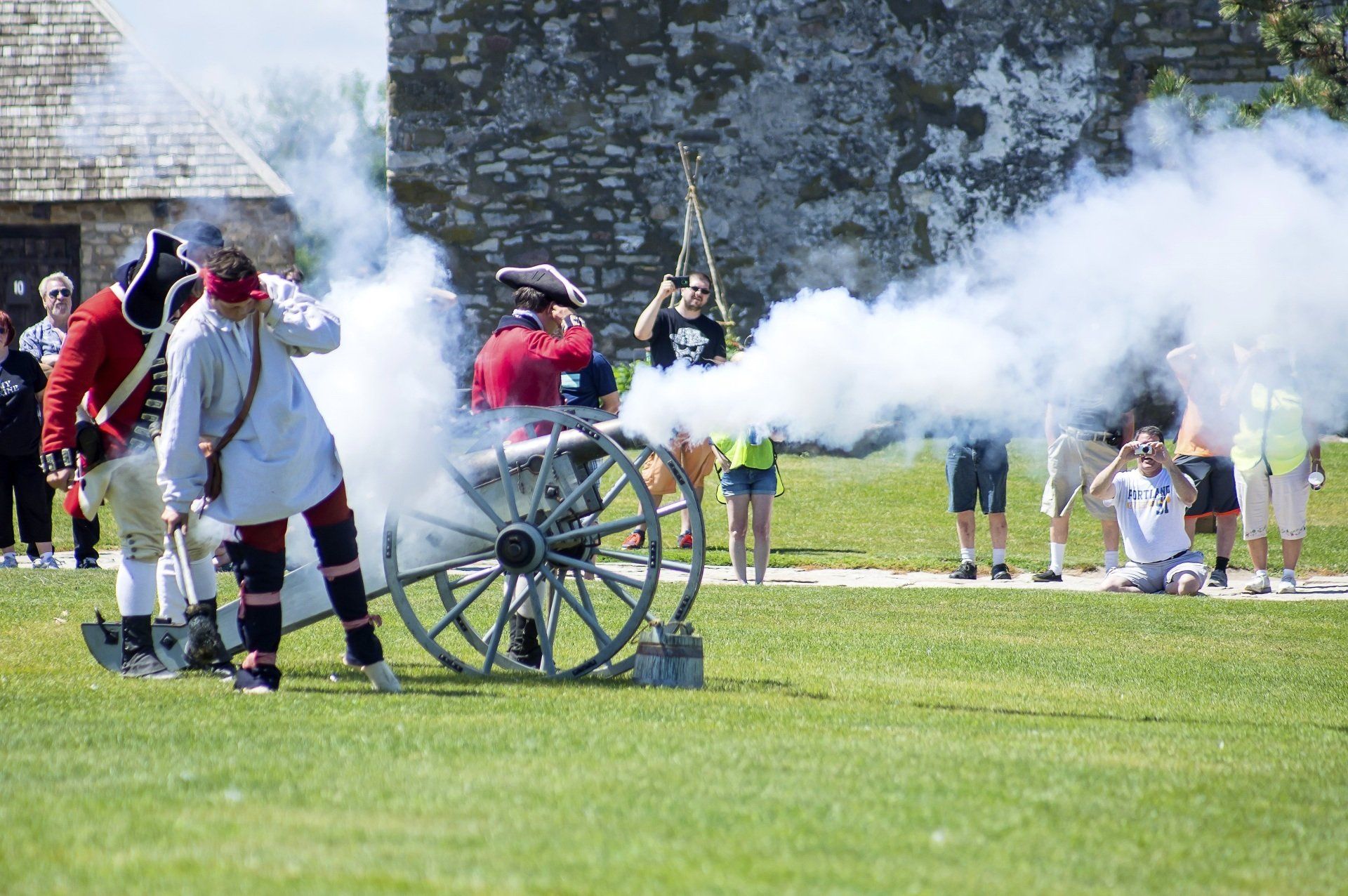War of 1812
The War of 1812 wrought massive changes to the lands surrounding the Niagara Falls National Heritage Area, transforming it from a lightly settled frontier into a bustling commercial and agricultural region. Only several thousand Americans lived on the eastern shore of the Niagara River, mostly clustered at Black Rock and Buffalo. Almost as many Haudenosaunee, or Iroquois, resided at Buffalo Creek and the Tuscarora reservation near the small hamlet of Lewiston. The United States defended the river’s northern mouth at Fort Niagara, which Great Britain had only returned to the U.S. in 1796. British forts at the river’s northern and southern outlets represented the British empire’s continued presence in North America.
Massive invasions of tens of thousands of soldiers—American, British, Canadian and Indian—made the Niagara region one of the bloodiest battlegrounds in the War of 1812; almost half the war’s battles were fought nearby. The failed American invasion at Queenston Heights in 1812 was followed by ill-fated crossings at Fort Erie and Fort George, both of which ended in American retreat. The British captured Fort Niagara and burned most of the American settlements as far south as Buffalo in the winter of 1813-1814. Epic battles at Chippewa and Lundy’s Lane in the summer of 1814, both within sight of Niagara Falls, failed to change the border between the two nations. Tragically, the Haudenosaunee were forced to choose sides in the war, with some Iroquois siding with the British and others with the Americans; the spilling of fellow Haudenosaunee blood marked an important loss of unity among those people. The U.S. took much of their land and autonomy in the war’s aftermath, as American settlers streamed into western New York and the Erie Canal brought large-scale commerce to the region. Securing the border and ensuring peace between Great Britain (Canada’s ruler at the time) and the U.S. meant that Indian peoples no longer posed a major threat to American settlers, and commercial and agricultural development followed. Tourists now came to Niagara Falls in great numbers, attracted by the natural beauty and power of the falls, as well as the famous battlefields from the War of 1812.





